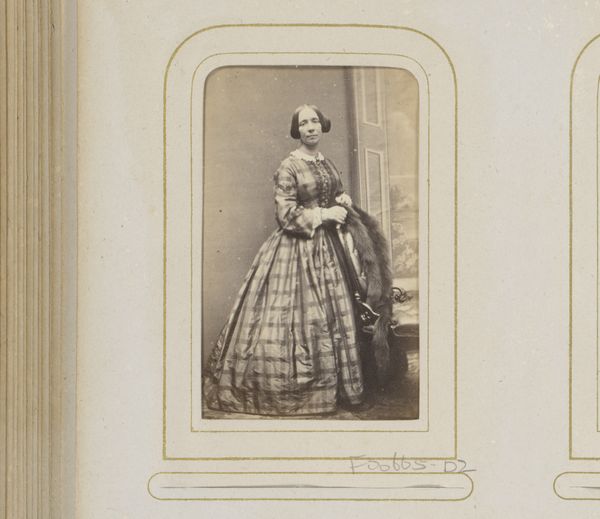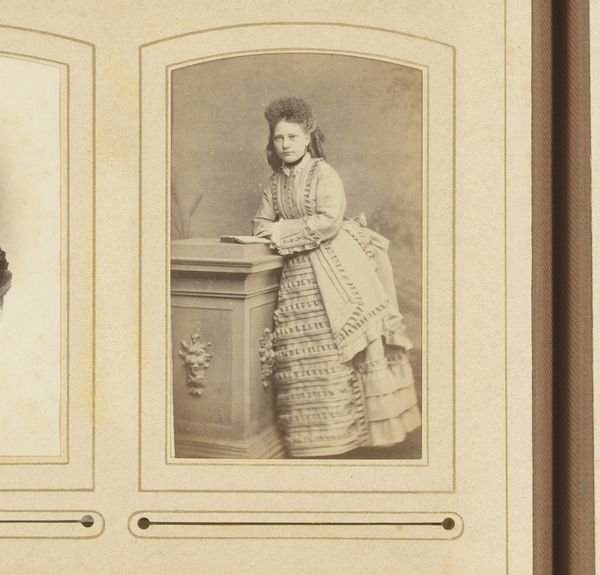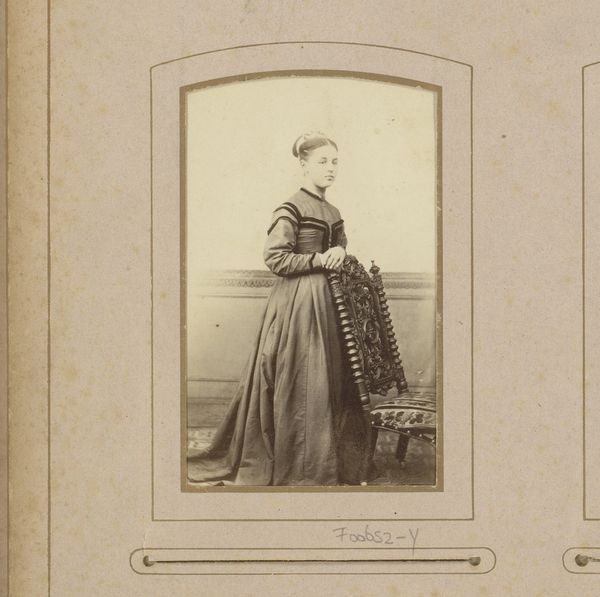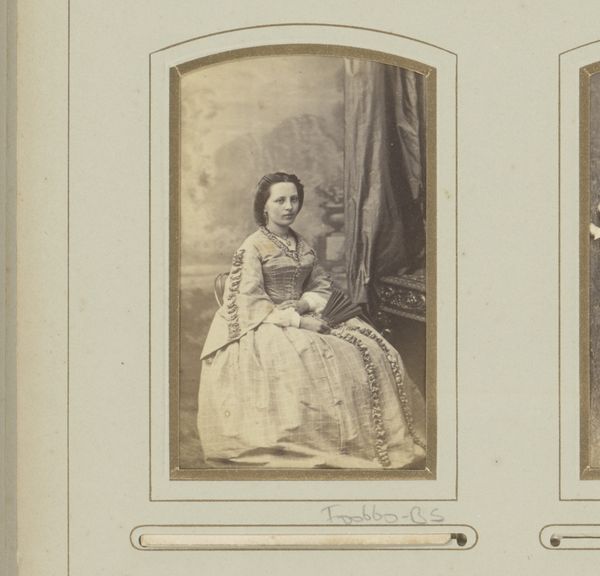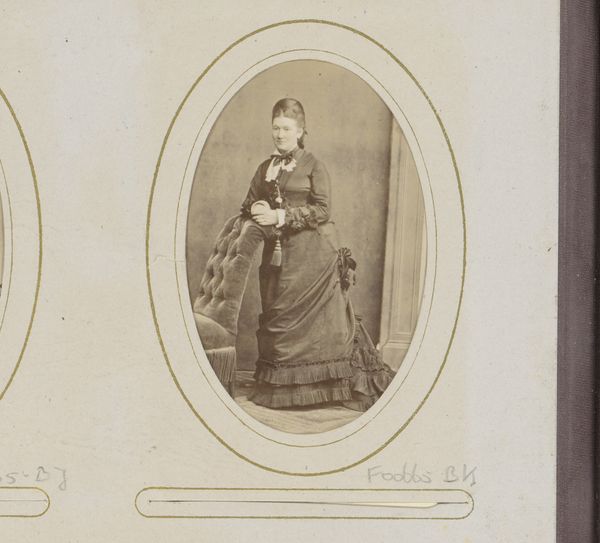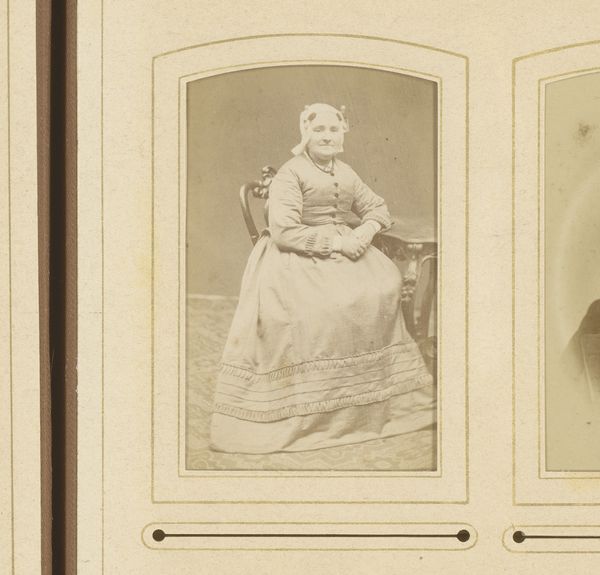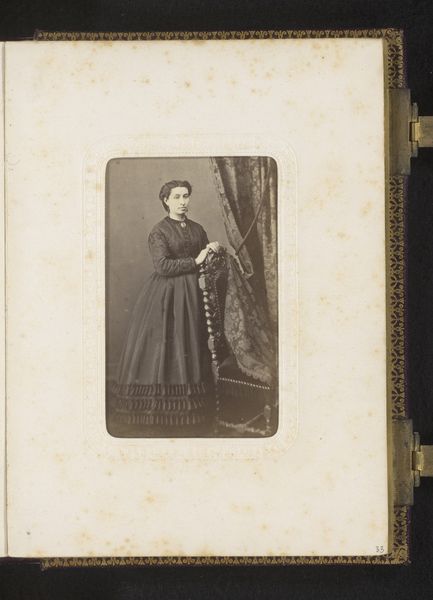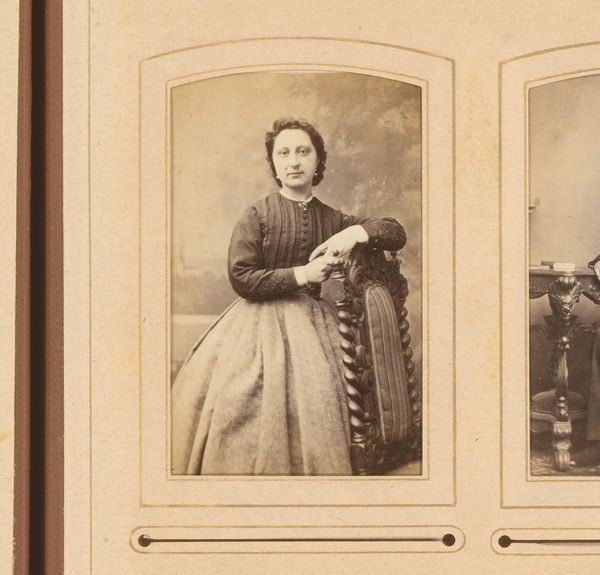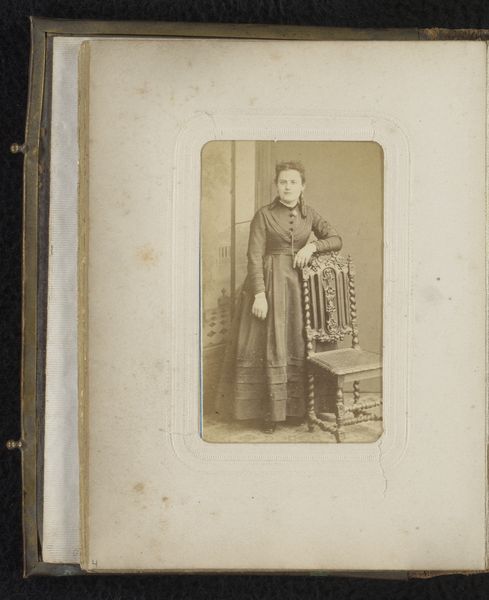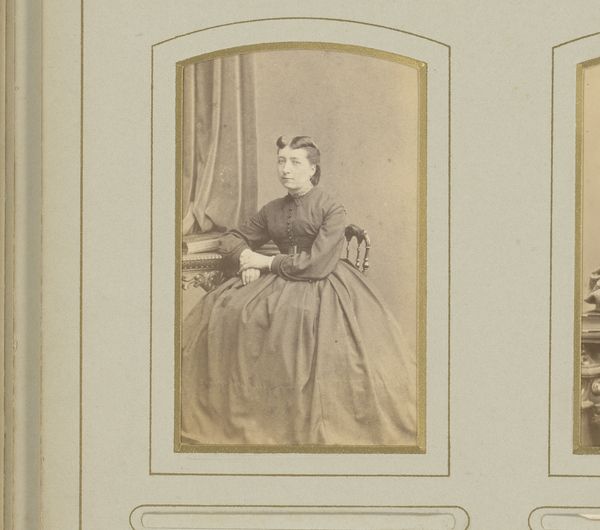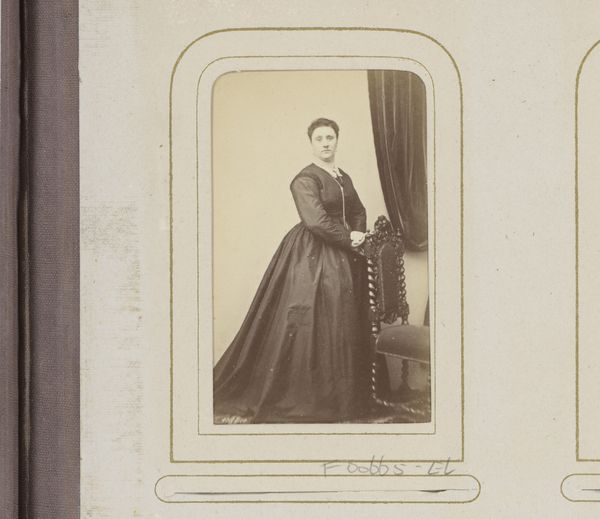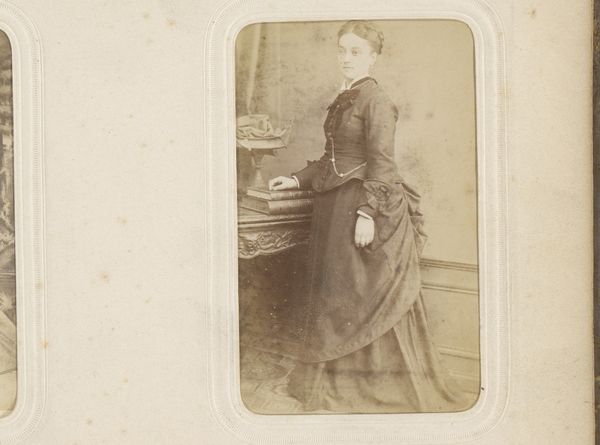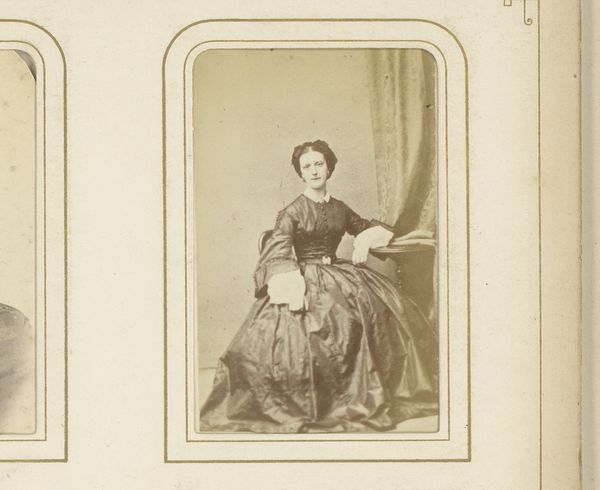
photography, gelatin-silver-print
#
portrait
#
photography
#
historical photography
#
gelatin-silver-print
#
19th century
Dimensions: height 81 mm, width 52 mm
Copyright: Rijks Museum: Open Domain
Editor: This is "Portret van een staande vrouw bij een stoel," or "Portrait of a standing woman by a chair," a gelatin-silver print made sometime between 1851 and 1884 by Herman Bückmann. I find it fascinating how posed it is, the way she rigidly leans against that elaborate chair. What can you tell me about this portrait? Curator: This portrait provides a powerful window into the socio-political constraints placed on women during the 19th century. Consider her posture, her dress, even the setting. The ornate chair acts as a prop, reinforcing notions of domesticity and prescribed roles. How does her gaze strike you? Editor: It feels a little sad, maybe resigned? Like she's performing a role rather than expressing herself freely. Curator: Precisely. This photograph operates on multiple levels. While seemingly a straightforward portrait, it subtly reveals the limitations imposed on women's self-expression. Photography during this period was often used to reinforce social norms, creating a visual archive of expected behaviors. It also makes you wonder about the artist’s intentions. What message was Bückmann trying to convey through her image? Editor: That’s true; it's difficult to see the photographer's intention! I hadn't considered the performative aspect so deeply. Thanks for making me think about gender and its intersection with social norms in historical portraits. Curator: My pleasure. Reflecting on these early photographic portraits, considering the restrictions and expectations, allows us a clearer view of women's agency, resistance, and resilience within limited spaces.
Comments
No comments
Be the first to comment and join the conversation on the ultimate creative platform.
